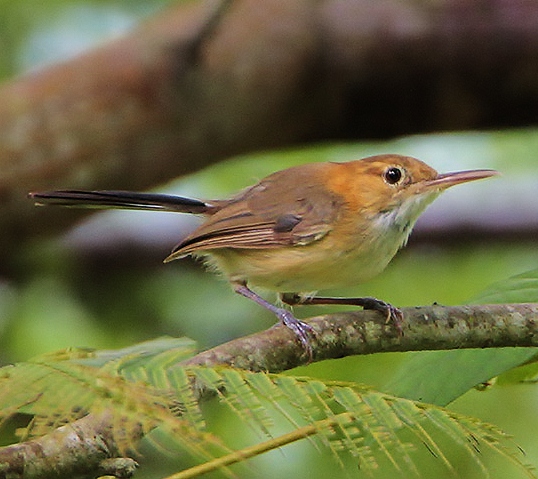 |
| Photo by Greg Lavaty (PBase) |
Common name:
long-billed gnatwren (en); bico-assovelado (pt); microbate à long bec (fr); saltón picudo (es); schwarzschwanz-degenschnäbler (de)
Taxonomy:
Order Passeriformes
Family Polioptilidae
Range:
This species is found in Central and South America, from southern Mexico down to Bolivia and south-eastern Brazil.
Size:
These birds are 11-13 cm long and weigh 9-11 g.
Habitat:
The long-billed gnatwren is found in dry forests and woodlands, moist tropical forests, second growths and scrublands. They are present from sea level up to an altitude of 750 m.
Diet:
They eat insects and small spiders, which they find in dense undergrowths.
Breeding:
Long-billed gnatwrens breed in April-June. The nest is a deep cup made of plant fibres and placed in a small plant, sapling or vine, near the ground. The female lays 2 white eggs with reddish-brown spots, which are incubated by both parents for 16-17 days. The chicks fledge 11-12 days after hatching.
Conservation:
IUCN status – LC (Least Concern)
This species has a very large breeding range and a global population estimated at 5-50 million individuals. The population is suspected to be in decline owing to ongoing habitat destruction and fragmentation, but it is not considered threatened at present.







